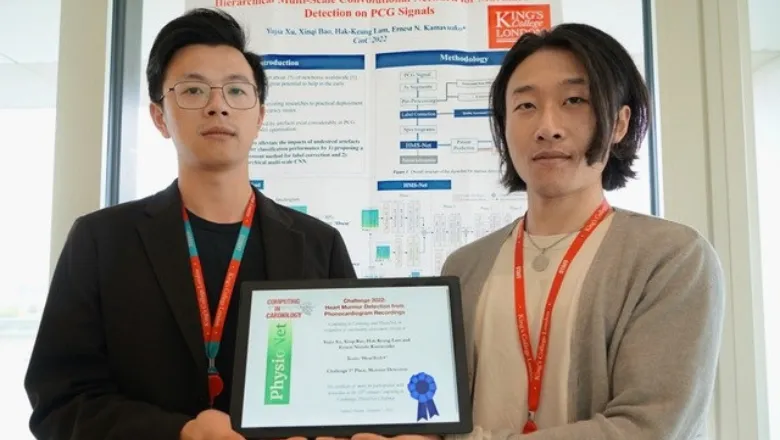28 September 2022
Detecting heart defects in babies and children
A team from the Department of Engineering has scooped first prize in the annual PhysioNet Computing in Cardiology challenge.

A team from the Department of Engineering has scooped first prize in the annual PhysioNet Computing in Cardiology challenge. Entrants were asked to design and implement open-source algorithms that allow heart murmurs to be identified from echo sound recordings.
Non-invasive assessment of the heart can identify congenital and acquired heart defects in children. Lack of diagnosis, especially in poorer countries with high birth rates, is a major health challenge. The data that underpinned the challenge were collected in two mass screening programmes for patients under the age of 21 in northeast Brazil.
PhysioNet was established in 1999 under the auspices of the National Institutes of Health (NIH) in the USA. It conducts and promotes biomedical research and education, in part by offering free access to large collections of physiological and clinical data and related open-source software. It has run annual biomedical challenges since 1999, focusing research on unsolved problems in clinical and basic science.
The King’s team was made up of two PhD students, Yujia Xu and Xinqi Bao, and two academics from the Department of Engineering, Dr Ernest Kamavuako, Senior Lecturer and Dr Hak-Keung (HK) Lam, Reader.
Commenting on the challenge, Ernest said:
"I am very proud of our two PhD Students to win first place in such a competitive challenge with a novel signal processing approach."
Hak-Keung added: “We are pleased that our team HearTech+ has been ranked in 1st place in the 2022 PhysioNet Computing in Cardiology challenge. Ernest and I are very pound that our PhD students, Yujia Yu and Xinqi Bao, demonstrated excellent research capability to develop state-of-the-art machine-learning algorithms to detect heart murmur from phonocardiogram recordings for diagnosing congenital heart diseases that affect about 1% of newborns.”
This was an opportunity to analyse extensive patient data and develop an algorithm that recognises patterns. Such an algorithm paves the way for innovative and life-saving miniaturised heart disease detection and monitoring devices.


